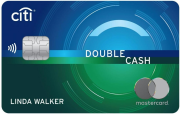The content on this page is accurate as of the posting date; however, some of the offers mentioned may have expired.

You may be wondering why credit card companies are so eager to offer up a zero percent interest rate on balance transfers. Isn't that like giving away free money?
Well, everyone knows that nothing in this world is free. The truth is these credit card companies are making plenty of money off these deals, in large part because of the way finance charges are levied on new purchases (we'll get to that in a second.)
This article will show you that you can take advantage of the zero percent deal and avoid those hefty finance charges. It requires a second credit card with a low annual percentage rate (APR) or a rewards program. But before we get down to the nitty gritty, you need to fully understand how the zero percent deal works.
Didn't See it Coming
Basically, credit card companies allow you to transfer a balance from your existing credit card(s) onto their card. For a specified period of time, your interest rate on that balance will be zero percent. Any new purchases are charged at the regular APR. Sounds fair, right?
But what you may not realize is that any new payments made are going to be applied to the principal that has the lowest interest rate - specifically, the amount you initially transferred over to take advantage of the zero percent rate. In other words, you need to pay off that entire balance before your monthly payment can be applied to new charges. Many people are unaware of this, yet it can result in finance charges that build up over time.
Counter Attack
There are two ways to avoid this problem. The first is not to make any charges at all on the card after you've made the balance transfer. This may be a tough choice though, because you limit your ability to use plastic in the crunch.
A more realistic approach, but one requiring discipline on your part, would be to use two cards. One would have the zero-percent transfer rate and the other would be a card with an extremely low APR or a rewards program. Here's how it would work.
- Find your zero-percent card first. Weed out the zero percent deals that charge a balance transfer fee or an annual fee, and find a card that offers the longest period of time at the zero-percent rate. These range from 6 to 15 months. Keep in mind that some offers will require a number of new purchases each month - if so, shop for ones that require no minimum dollar amounts. The beauty is that if there is no minimum purchase amount required, you can make your mandatory purchases per month for as small an amount as possible, and the finance charge on the new purchases will be miniscule.
- Try and set up your own repayment plan for the zero-percent balance. If you can't pay off the entire balance, you can always switch it to another card when the time comes (at the end of the zero-percent period).
- Find a second credit card so that you've got plastic for new purchases. If you think you'll wind up carrying a balance, find a card with a low APR. If you're interested in eradicating your debt and can stick to a monthly payment plan, then maybe you should consider a second card that provides a rewards program of some sort - travel, cash, or whatever suits your needs.
In effect, what you've done is establish a convenient debt management program for yourself. You've taken that big lump of money, moved it to a zero percent deal, and set yourself up on a repayment plan. You've also acquired another card so you can go ahead and live your normal life (although we'd suggest sticking to a budget), building up rewards points in the process.
Overall, this can be a sweet deal, but it does depend on your ability to follow a plan. "The problem with zero percent balance transfers is that they are addictive," says Ravi Shahani, a credit counselor with American Consumer Credit Counselors. "People accumulate debt, than get stuck with high interest." If you can avoid the temptation, however, and stick to this blueprint, you can knock out your debt without paying a fortune in interest.



